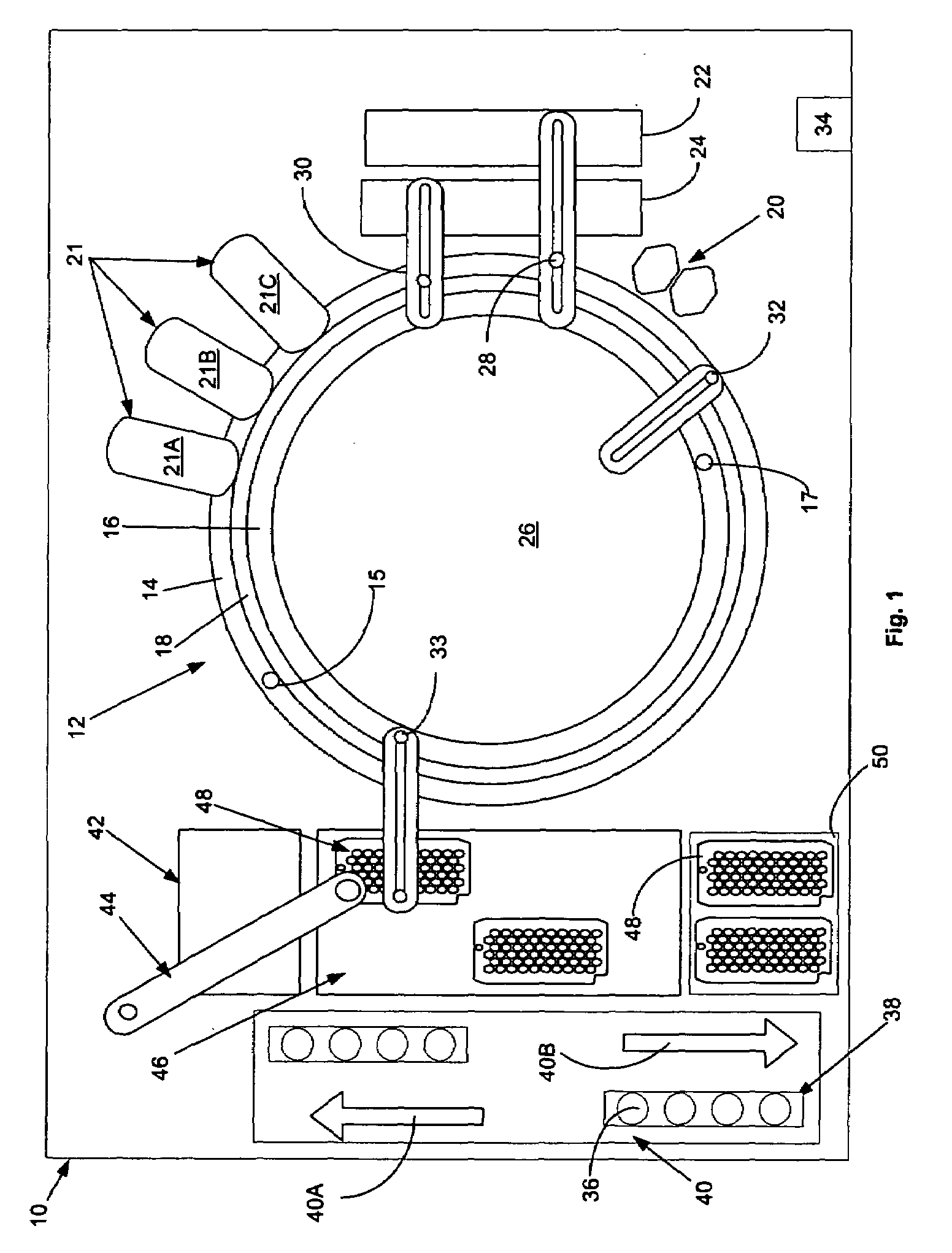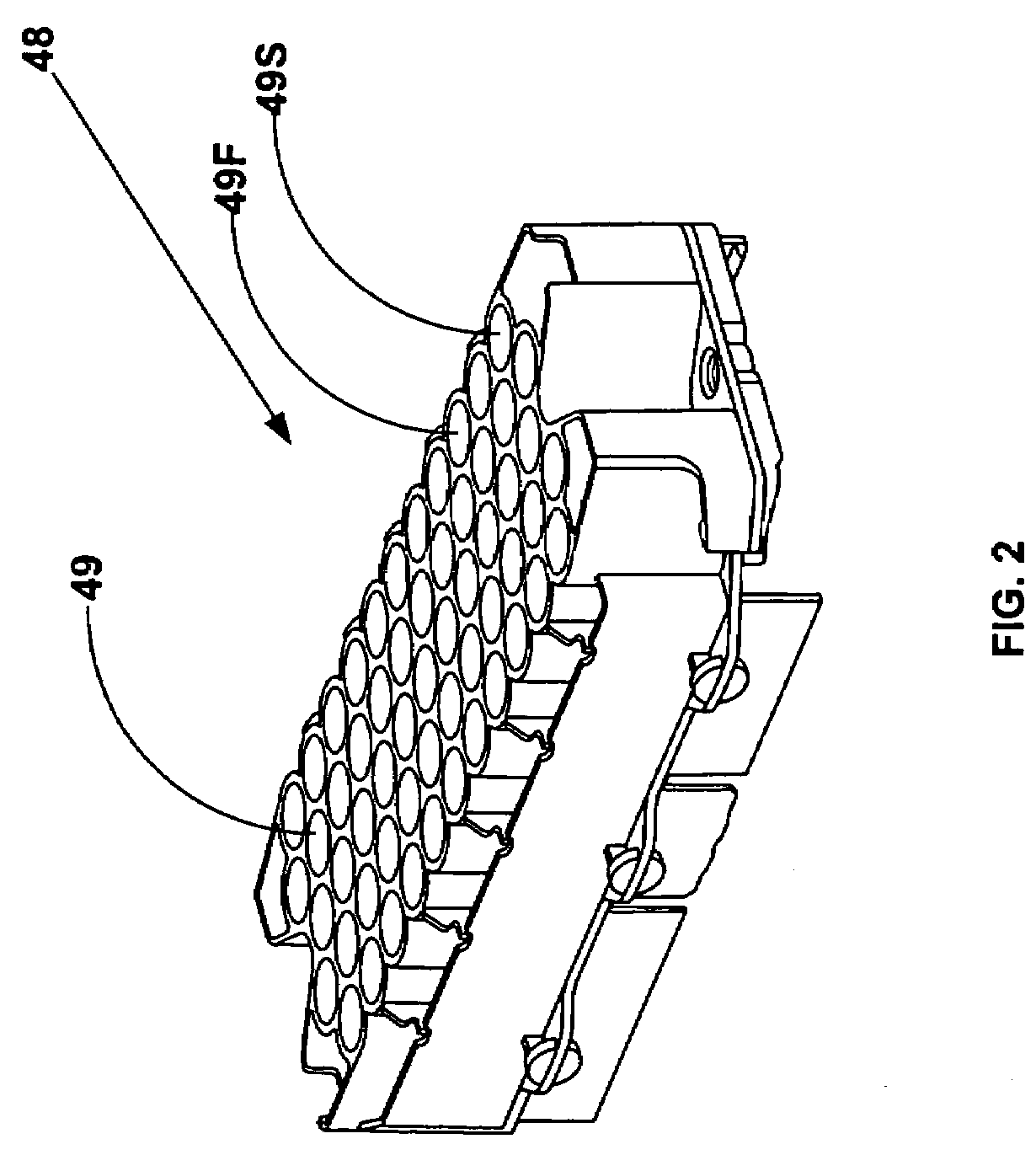System for automatically storing and reprocessing patient sample's in an automatic clinical analyzer
a clinical analyzer and automatic storage technology, applied in the field of automatic clinical analyzers, can solve the problems of large potential errors, high effort given to automated processing of complex immunoassays, and difficulty in maintaining high throughput and analytical accuracy, so as to eliminate operator intervention and improve the efficiency of re-testing
- Summary
- Abstract
- Description
- Claims
- Application Information
AI Technical Summary
Benefits of technology
Problems solved by technology
Method used
Image
Examples
Embodiment Construction
[0028]FIG. 1 shows schematically the elements of a conventional automatic chemical analyzer 10 in which the present invention may be advantageously practiced. Analyzer 10 comprises a reaction carousel 12 supporting an outer cuvette circle 14 of cuvette ports 15 and an inner cuvette circle 16 of cuvette ports 17, the outer cuvette circle 14 and inner cuvette circle 16 being separated by a groove 18. Cuvette ports 15 are adapted to receive a plurality of reaction cuvettes typically formed as small, flat walled, U-shaped containers having an open central reaction portion closed at the bottom and with an opening at the top to allow the addition of reagent and sample liquids. Cuvette ports 17 are adapted to receive a plurality of similar reaction cuvettes except being round walled. Reaction carousel 12 is rotatable using stepwise movements in a constant direction at a constant velocity, the stepwise movements being separated by a constant dwell time during which dwell time, carousel 12 i...
PUM
| Property | Measurement | Unit |
|---|---|---|
| RH | aaaaa | aaaaa |
| temperature | aaaaa | aaaaa |
| temperature | aaaaa | aaaaa |
Abstract
Description
Claims
Application Information
 Login to View More
Login to View More - R&D
- Intellectual Property
- Life Sciences
- Materials
- Tech Scout
- Unparalleled Data Quality
- Higher Quality Content
- 60% Fewer Hallucinations
Browse by: Latest US Patents, China's latest patents, Technical Efficacy Thesaurus, Application Domain, Technology Topic, Popular Technical Reports.
© 2025 PatSnap. All rights reserved.Legal|Privacy policy|Modern Slavery Act Transparency Statement|Sitemap|About US| Contact US: help@patsnap.com



